Home fridges are somewhat quiet. You may hear it running if you stand close to it. Otherwise, everything else going on drowns out the noise it makes. However, once the fridge starts to sound like a helicopter, it indicates a problem. If you're wondering why it happens, let's discuss the issue.
There are many sounds a failing refrigerator can make. If it sounds like a helicopter, it's likely an issue with the evaporator fan. It's probably hitting something.
Frost build-up is the culprit. Fixing the problem involves defrosting the fan and inspecting surrounding parts.
It's not a simple case of frost build-up. Frost shouldn't be able to develop that far. Therefore, something is going on with one of the fridge's components. Once you fix that problem, the helicopter sound won't return.
To learn more about this situation, keep reading.
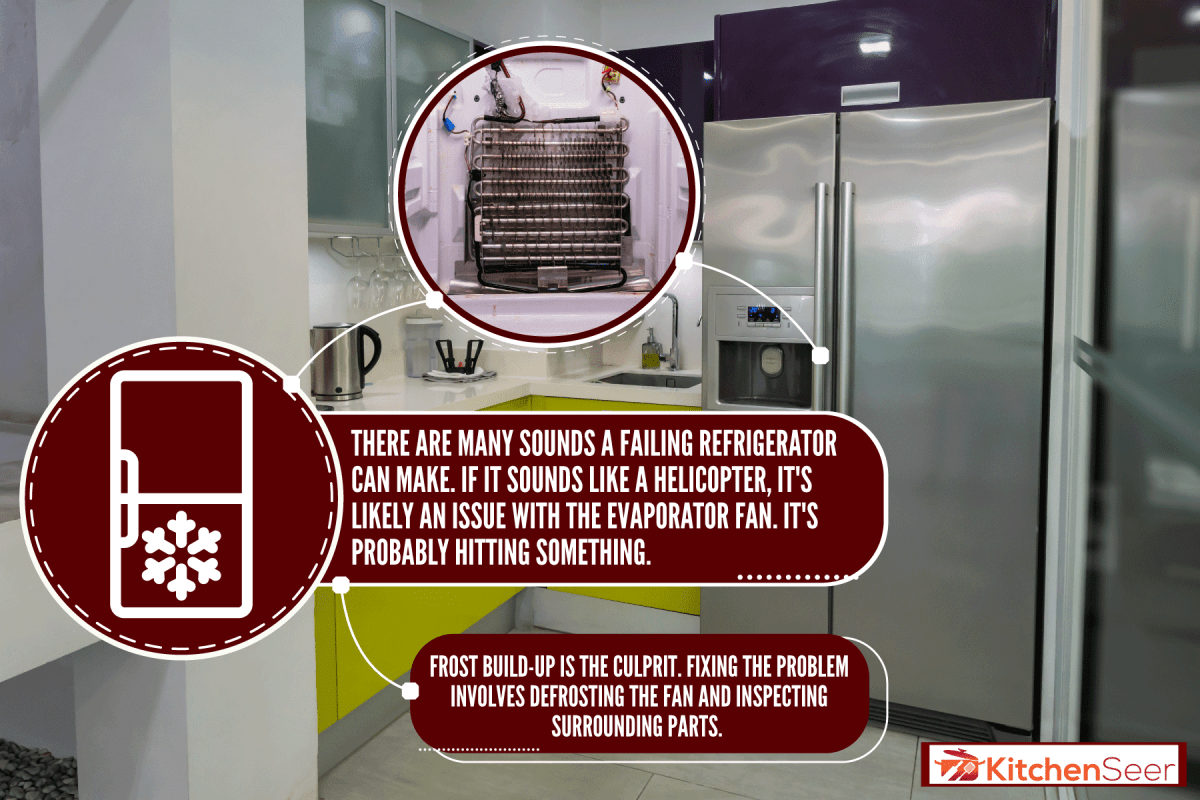
Why A Fridge Can Sound Like A Helicopter
The helicopter noise you hear is likely coming from the evaporator fan. In standard operations, it should spin free of obstacles. You will find the evaporator fan in the freezer.
It's in charge of circulating cold air in the fridge and freezer. The fan should be relatively noise-free. However, sometimes frost builds up around the area.
Frost can develop enough to obstruct the fan's spin. Solving this problem can be easy. First, you have to remove the frost.
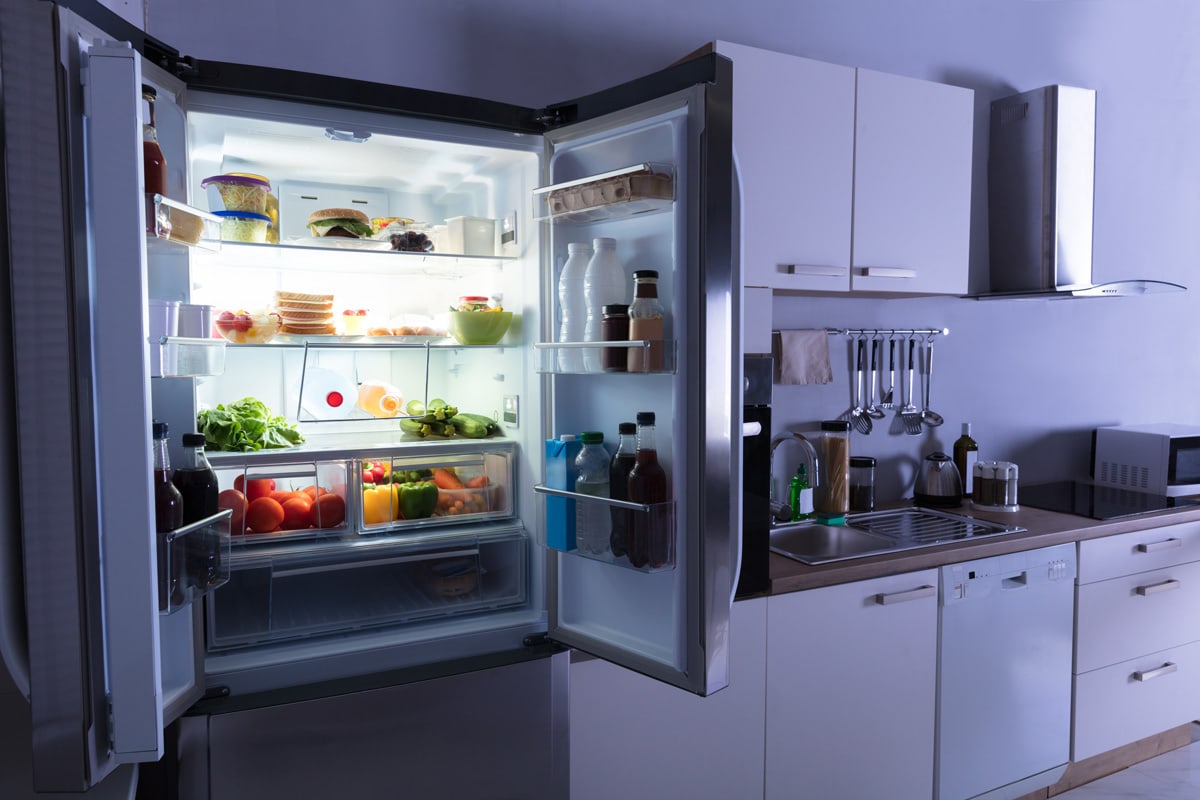
Removing the Frost
There are two ways you can approach this problem. The first method would be to clear out the entire fridge. Hold the items inside another refrigerator or stand-alone freezer.
Before you attempt to defrost the freezer, lay some towels under the fridge. Depending on the amount of frost, it may overflow the drain pan behind the refrigerator. It could damage your flooring if you don't expect it.
Then, leave the fridge unplugged for an entire day with the door open. It should be enough time to let the frost melt. Of course, some of us might not own two fridges.
In this situation, you can take a blow dryer and point it directly at the back wall of the freezer. Blow inside of the grates too. This method should take you about 10-15 minutes to complete.
Cleaning Up
Of course, you don't want to power the fridge until you remove all the water inside. Soak it all up with a towel. Afterward, you can plug it in and see if the problem persists after a few days.
Reoccurring Helicopter Sounds
There is a chance the helicopter noise will come back. If that's the case, there are a couple of reasons why it happens. It will concern the components in the back wall of the freezer.
How A Fridge Defrosts
Modern fridges will usually have a defrost thermostat and heater. These two components are in charge of ensuring frost doesn't accumulate.
In some cases, the coils in a fridge will become too cold. The defrost thermostat will communicate with a timer when temperatures get too low. Then, the timer will cue the heater to turn on.
The defrost heater will melt any excess ice build-up on the coils. Once the coils reach the correct temperature, the thermostat will signal the heater off.
Removing The Back Panel
Before defrosting the area near the evaporator fan again, it's a good idea to look behind the back wall. Of course, we can't give you a detailed guide to do this. The reason is that fridge designs vary from model to model.
Generally, there should be some screws that hold the wall in place. Use a drill on the lowest torque setting to remove them. Removing the back wall should be as simple as lifting and pulling it out afterward.
It's worth noting that some manufacturers attach a wire to the back panel. So, remove it slowly from one side. This way, you don't unplug or break anything accidentally.
Once the back panel is off, you should be able to see the defrost system. A few wires and coils will be in your line of sight. Here's an example:
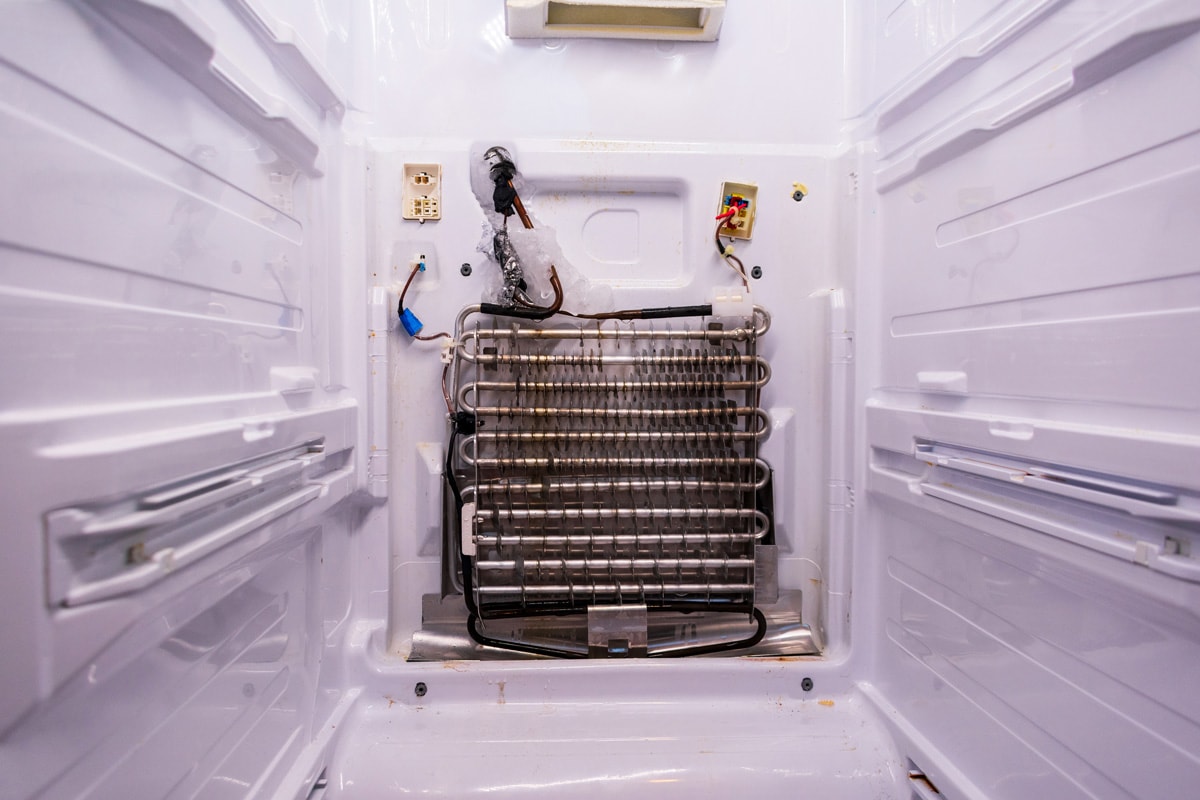
Finding the Culprit
Now we can see the system in its entirety. It helps us determine the severity of the frost problem. If there is a moderate amount of frost on the coils, you might be overcrowding the freezer.
Overfilling the freezer is an easy mistake anyone can make. When you do this, it blocks airflow. As a result, frost forms because the coils become too cold.
To avoid this from happening again, try not to overfill the freezer. At the least, don't let items block the evaporator fan. Since the back panel is off, it's a good time to defrost the coils with a blow dryer.
Dry off the area before plugging the fridge back in.
Faulty Defrost Components
When the defrost components fail, you will likely have a severe case of frost build-up. Instead of a few strands of ice here and there between coils, it will cover it completely.
This level of build-up happens because the thermostat can no longer read the temperature correctly. Otherwise, it could be the heater. Over time, components tend to degrade. Thus, the heater can potentially burn out.
Fixing the problem isn't as simple as defrosting the system with a blow dryer. You will need to find a compatible heater and thermostat for your fridge.
Since you might not have the tools to test which component has given out, it's better to replace them as a pair.
Click here to see this defrost thermostat on Amazon.
Click here to see this refrigerator defrost heater on Amazon.
How To Replace Defrost Thermostat
Once you find a compatible replacement, replacing the components yourself is relatively easy. Though, you might need a little experience with wiring. Some fridge models have connections that you can easily remove.
Others require you to cut the existing wiring. You will clip the wire as close to the thermostat as possible. Then, strip a quarter inch of insulation using a wire crimping tool.
Click here to see this wire crimper on Amazon.
Now you will need to connect the new thermostat with the old wiring. You can do that by using wire nuts.
Click here to see these wire nuts on Amazon.
Seal the connection by filling the wire nut with silicone sealant at the bottom. Finally, clip the thermostat to the refrigerant tubing.
Here are two video demonstrations of what you'll have to deal with:
How To Replace Defrost Heater
Removing the defrost heater follows a similar procedure. You will have to disconnect the heater's connectors. However, be cautious with handling the coils.
The defrost heater is under the evaporator coil. You will need to remove some brackets before you can pull the heater out. The evaporator coil should move a bit forward when you do this.

It should be safe as long as it doesn't pop out entirely. Replacing the heater is tough to explain in words. Here's a video demonstrating how you'll go about doing this:
When Should I Worry About My Fridge Noise?
Helicopter noises aren't the only noise that should raise concerns. There are many different components in a fridge. When one of them fails, it will make a noise in the direction of the part.
In this post, the helicopter noise came from the evaporator fan. This fan is usually in the freezer portion of the fridge. Noise could also come from the bottom and back.
You should be the most concerned when noise comes from the back or bottom of the fridge. This area is where you will find the compressor. A knocking sound coming from the back typically indicates a failing compressor.
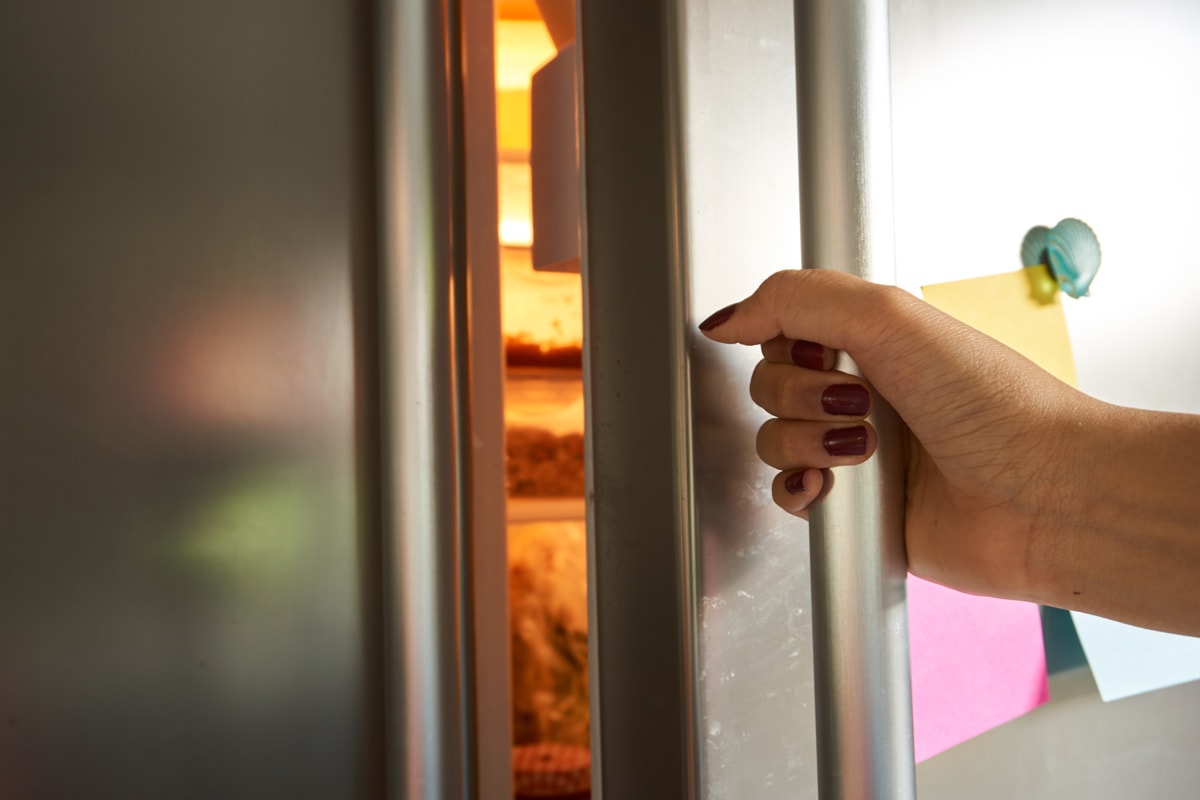
At that point, you'll need to decide if it's worth replacing the compressor or buying a new fridge. There may also be a rattling noise that comes out of the bottom.
This type of noise isn't too much of a concern. It means the drain pan became loose. You'll need to put the pan back into place to stop the rattling.
Humming or Buzzing
On the topic of noises, there are a couple that should never raise concerns. Humming or buzzing sounds are standard for a fridge. The humming sound comes from the compressor doing its job.
On the other hand, the buzzing sound usually comes from a fridge's water or ice dispenser. A fridge will never be quiet entirely.
If it becomes quiet suddenly, there's a problem with the compressor. Compressors compress and control the flow of refrigerant. If it wears out, you'll need a new fridge.
Compressors will sometimes cost half or more than a new fridge itself.
In Closing

A fridge is noisy, but it should never be helicopter noisy. Fortunately, it's not tough to find the source of the problem. Hopefully, it's nothing more than excess frost that needs to melt. We hope you found this informative. Good luck troubleshooting your fridge.
Before you go, do you have more noise concerns? Still skeptical of the buzzing noise? To learn more on this topic, check out:
Fridge Buzzing Stops When Door Open - Is This Ok?
Is there a cooling problem? We can help you troubleshoot this issue. For more information, check out:
Fridge Not Cooling But Light Is On - What To Do?





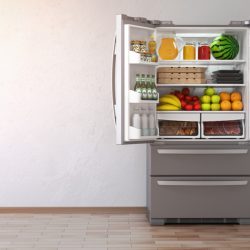
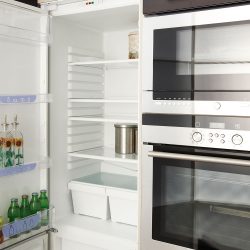
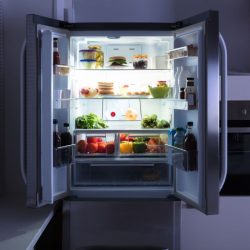
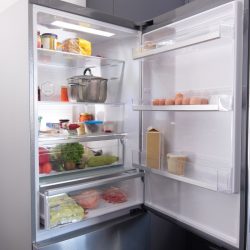
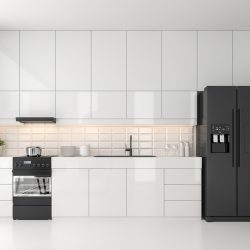
![Disassembled refrigerator compressor, How To Quiet A Noisy Refrigerator Compressor [8 Different Ideas]](https://kitchenseer.com/wp-content/uploads/2022/03/Dissaembled-refrigerator-compressor-250x250.jpg)